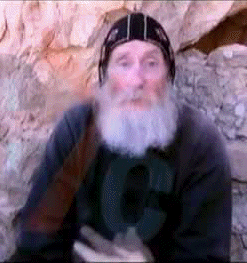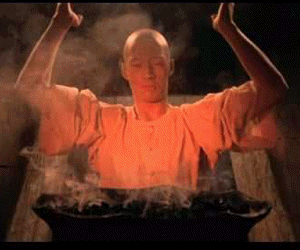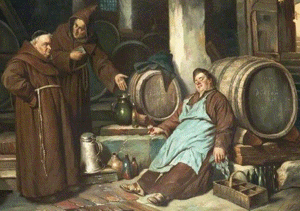A. We fall, and we get back up. We fall, and we get back up. We fall, and we ...
Eastern Monasticism Proverb

|
Q. What do you do all day in a monastery? A. We fall, and we get back up. We fall, and we get back up. We fall, and we ... Eastern Monasticism Proverb |
 |
| The Argument Against | The Argument For |
|---|---|
| "Then again, the pioneers of the movement all began their desert lives before the "'peace of the church,' before things went supposedly lax. Antony took up asceticism over four decades before the persecution of Christians ceased, and he visited a number of Christian hermits who had already been living apart from society for years. There seems to have been, then, some other motive driving Christians to abandon family and property and pray their days away." |
While it is true that martyrs were still being made when the anchorites appeared, the waning of persecution created a vacuum filled by monasticism. All through history there has always been a form of Heroic Christianity: martyrs, monks, reformers, and now missionaries. |
| Type | Non-Christian Monasticism | Christian Monasticism |
|---|---|---|
| Hermits | Before 600 BC - Hindu monks living in ashrams; no Rule | EAST 300 AD – First desert monks living alone or in small groups with no Rule; WEST 400 AD – Celtic monks in Gaul |
| Monasteries | From 600 BC – Jainists, a strict subset of Hinduism led by Mahavira, form communities of monks and nuns; | 200 BC – Essenes form a monastic Jewish communityPachomius forms first monastic communities with a Rule; Benedict follows |
| Wanderers | From 600 BC – Sangha, Buddist monks, wander, teach, preach, and beg | Franciscan friars wander, teach, preach, and beg; later followed by the Dominicans |

 True, Some Christian Monks Were Certifiable Insane
True, Some Christian Monks Were Certifiable Insane| Western Monasticism Highlights | Eastern Monasticism Highlights |
|---|---|
| 360 Martin of Tours takes up the monastic life 385 Jerome and companions found a monastery near Bethlehem; 404 Jerome translates the Pachomian Rule into Latin c. 500 Benedict of Nursia withdraws to a cave to begin the monastic life |
|
 "The very word "pagan," meaning "rural" or "from the countryside," came to be used of the heathen customs, beliefs, and practices that still lingered in rural areas. As Christianity consolidated its position in the cities, many believed demons were forced to flee to the desert. So Antony and other monks went to the desert to do battle, much as Christ had gone into the desert and was "tempted by Satan, and was with the wild beasts" (Mark 1:13).
"The very word "pagan," meaning "rural" or "from the countryside," came to be used of the heathen customs, beliefs, and practices that still lingered in rural areas. As Christianity consolidated its position in the cities, many believed demons were forced to flee to the desert. So Antony and other monks went to the desert to do battle, much as Christ had gone into the desert and was "tempted by Satan, and was with the wild beasts" (Mark 1:13).Antony and the Desert Fathers: From the Editors - Models or Kooks? The questions that hover in the background of this issue are as pressing as ever. Mark Galli
In many stories, Antony is clearly a "new Adam," an example of restored humanity, one who is not subject to creation but master of it. In one incident, Antony scolds animals who had trampled his garden, and from then on, they no longer do so. In another story, a pack of hyenas threaten to attack him, but when Antony tells them to depart, they obey.
| The Body and Its Pleasures are Bad. | The Body and Its Pleasures are Good, but God is Better. |
|---|---|
| I understand this when I see it in Catholic monasticism, because Catholicism does not put as much stress as the Orthodox Church on the goodness of matter. I am surprised, however, when I see extreme ascetism in Orthodox monks. | Our bodies are matter, and matter is good, but communion with God is better than enjoying the blessings of this material world. |
 cloth, growing their own food, and doing their own carpentry and masonry work.
cloth, growing their own food, and doing their own carpentry and masonry work.